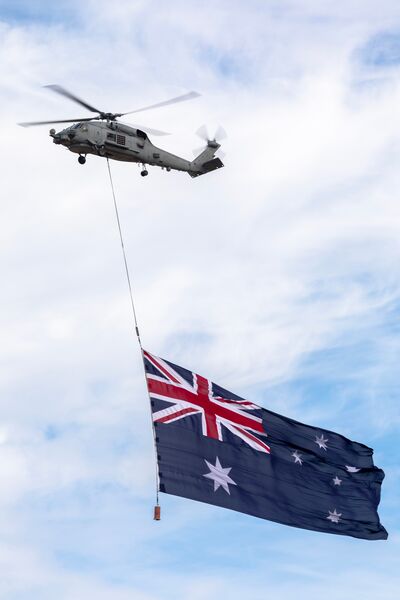
A Royal Australian Navy MH-60R helicopter carries the Australian national flag during the 2023 Avalon International Airshow. (Commonwealth of Australia)
Australia is to adopt a defence strategy of denial centred on anti-access/area-denial capabilities focused on its northern approaches and its primary regional area of military interest, the country's most significant strategic review in a generation has revealed.
Conducted by former Australian Defence Force (ADF) Chief Angus Houston and former Defence Minister Stephen Smith, and released on 24 April by Prime Minister Anthony Albanese, the unclassified version of the Defence Strategic Review said the current ADF structure is based on a ‘balanced force' model and Defence of Australia doctrine that reflects a bygone era.
“The development of a strategy of denial for the ADF is key in our ability to deny an adversary freedom of action to militarily coerce Australia and to operate against Australia without being held at risk,” the review said.
Describing Australia's primary region of military interest as the northeastern Indian Ocean through maritime Southeast Asia into the Pacific and including Australia's northern approaches, the review said the strategy of denial with long-range and short-range capabilities must also recognise the importance of non-geographic security threats including cyber, space, and long-range missile capabilities.
Although China was not labelled as a direct military threat to Australia, the review said Beijing's assertion of sovereignty over the contested South China Sea “threatens the global rules-based order in the Indo-Pacific in a way that adversely impacts Australia's national interests”.
All the recommendations in the unclassified review have been agreed by the government, which has identified six priority areas for immediate action.
Looking to read the full article?
Gain unlimited access to Janes news and more...







